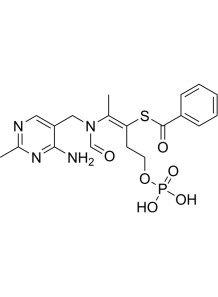Benfotiamine (Oil-Soluble Vitamin B1)
Analytical
Code: 127592
a synthetic, fat-soluble derivative of thiamine (vitamin B1). Its structure allows for greater absorption and cellular uptake compared to water-soluble thiamine, leading to higher intracellular levels. This enhanced bioavailability has prompted research into its therapeutic potential, especially for conditions related to high blood sugar and oxidative stress.
Cart
No products
Subtotal:
0.00
Total
0.00
THB



